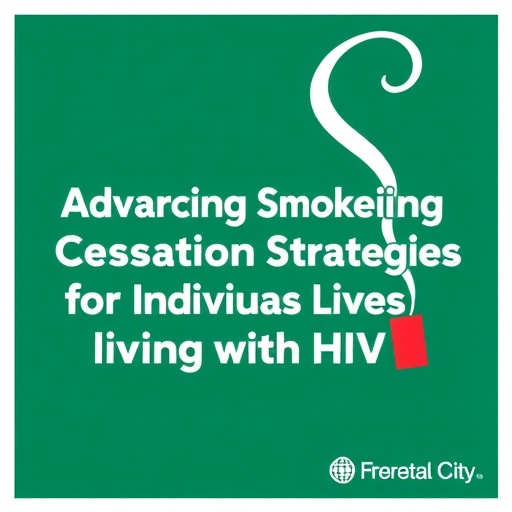A groundbreaking study conducted on a population exceeding 36,000 individuals diagnosed with hypertension has unveiled compelling evidence linking incremental increases in daily step count and walking pace with substantial reductions in cardiovascular risk. This research, published in the European Journal of Preventive Cardiology, elucidates that even modest physical activity levels below the traditionally advocated daily goal of 10,000 steps confer significant protective effects against major adverse cardiovascular events (MACE), including heart attacks, heart failure, and stroke.
The investigation reveals a clear, dose-dependent inverse association between the number of steps taken daily and the incidence of serious cardiac and vascular complications. Remarkably, compared to a baseline of 2,300 steps per day, each additional 1,000 steps walked correlates with a 17% decrease in the risk of encountering a MACE, up to the threshold of 10,000 steps. Notably, surpassing this threshold is linked predominantly with a diminished risk of stroke, underscoring the nuanced benefits of escalated physical activity in hypertensive populations.
Hypertension affects approximately 1.28 billion individuals worldwide, imposing a substantial burden given its well-recognized role as a major risk factor for heart disease, stroke, and heart failure. Prior to this study, quantifying the extent of physical activity required to yield measurable cardiovascular protection in this vulnerable group remained uncertain. The current findings address this gap, providing robust quantitative data on step counts and walking intensity, derived from the objective monitoring of participants using wrist-worn accelerometers.
.adsslot_P5Q4JXWCN1{width:728px !important;height:90px !important;}
@media(max-width:1199px){ .adsslot_P5Q4JXWCN1{width:468px !important;height:60px !important;}
}
@media(max-width:767px){ .adsslot_P5Q4JXWCN1{width:320px !important;height:50px !important;}
}
ADVERTISEMENT
Data were meticulously gathered from 32,192 participants enrolled in the UK Biobank study who met the criteria for high blood pressure. Participants’ ambulation was monitored continuously over seven days, capturing both distance and cadence metrics. The cohort’s mean age was 64 years, and follow-up extended over nearly eight years, amassing 283,001 person-years of observational data. During this surveillance period, 1,935 cardiovascular events, including heart attacks and strokes, were documented, affording a powerful statistical basis for evaluating risk modulation by physical activity.
Beyond the aggregate 17% reduction per 1,000-step increment in MACE risk, this research delineates domain-specific risk attenuations: a 22% decrease in heart failure incidence, a 9% reduction in myocardial infarctions, and a 24% decline in stroke occurrences. Translated into absolute terms, each additional 1,000 steps daily reduced the incidence of MACE by 31.5 events per 10,000 person-years, heart failure by 7.2 events, heart attacks by 9.9, and strokes by 10.4 events per the same denominator. These quantitative insights offer clinicians and patients tangible targets for cardiovascular risk mitigation through walking.
The study also probed the effects of walking intensity by assessing the average cadence during each individual’s 30 minutes of fastest walking. Participants averaged 80 steps per minute, with data demonstrating a robust 30% reduction in MACE risk associated with higher walking speeds. Importantly, no evidence surfaced indicating harm among individuals whose peak 30-minute walking or running cadence exceeded 130 steps per minute, affirming the safety and potential added benefit of brisk ambulation in hypertensive subjects.
Intriguingly, similar protective associations between step count and cardiovascular events were observed in a parallel cohort of 37,350 individuals without hypertension. In this group, each 1,000-step daily increment yielded a remarkable 20.2% reduction in MACE risk, alongside decreased risks for heart failure, myocardial infarctions, and stroke, reinforcing the universal benefit of increased physical activity on cardiovascular health irrespective of blood pressure status.
Professor Emmanuel Stamatakis, Director of the Mackenzie Wearables Research Hub at the University of Sydney and study supervisor, emphasized the clinical relevance of these findings. He highlighted that attainable, quantifiable physical activity goals could be integrated into patient care plans, promoting walking not only to reach but also to exceed conventional benchmarks. The research underscores the importance of both volume and intensity of ambulation in optimizing cardiovascular outcomes for individuals contending with hypertension.
Methodological strengths of this large-scale, prospective study include the deployment of objective wearable sensors to capture nuanced locomotor data and the comprehensive linkage of participant records to national mortality and morbidity databases across England, Wales, and Scotland. These rigorous data streams enhance confidence in the robustness and generalizability of the risk associations observed.
Nevertheless, the study acknowledges limitations, principally the reliance on a single measurement period for physical activity at baseline without accounting for subsequent behavioral changes. Additionally, the observational nature of the analysis precludes definitive causal inferences. While reverse causation was carefully addressed through sensitivity analyses, residual confounding may persist. The cohort’s demographic profile skews heavily towards White, better-educated, and healthier individuals compared to the broader UK population, potentially tempering widespread applicability without further validation.
This expansive research substantiates a paradigm shift in cardiovascular risk management for hypertensive patients, advocating that even step counts below 10,000 coupled with increased walking intensity substantially lower the risk of life-threatening cardiac and cerebrovascular events. The findings empower clinicians to personalize physical activity prescriptions, emphasizing attainable movement goals that may enhance adherence and clinical outcomes.
Future public health guidelines could harness these insights to devise stratified recommendations tailored to hypertensive individuals, integrating step-count metrics and cadence thresholds to optimize heart health. With wearable technology becoming increasingly accessible, leveraging real-time feedback on physical activity parameters offers a practical avenue to motivate sustained behavioral change.
In summary, this landmark study elucidates the critical role of daily ambulatory activity and intensity in mitigating cardiovascular risks among those with hypertension, spotlighting behaviorally modifiable targets readily accessible to the vast population burdened by high blood pressure. It represents a significant advance in preventive cardiology, marrying epidemiological rigor with technological innovation to chart new directions in personalized disease prevention.
Subject of Research: Impact of daily step count and walking intensity on cardiovascular risk in individuals with hypertension
Article Title: Prospective associations of daily step count and stepping intensity with overall and type-specific major adverse cardiovascular events in people with hypertension
News Publication Date: Not specified
Web References:
https://academic.oup.com/eurjpc/article-lookup/doi/10.1093/eurjpc/zwaf441
https://www.ukbiobank.ac.uk/
References:
Cheng, S.W.M., et al. European Journal of Preventive Cardiology, doi:10.1093/eurjpc/zwaf441
Keywords:
Human health, Health care, Hypertension, Cardiovascular disease, Physical activity, Walking intensity, Step count, Major adverse cardiovascular events, Heart failure, Stroke, Preventive cardiology
Tags: benefits of increased walking distancecardiovascular health benefits of walkingdaily step count and heart disease riskexercise recommendations for hypertensive individualshypertension and cardiovascular disease linkhypertension management strategiesimpact of walking pace on cardiovascular healthlifestyle changes for hypertension controlphysical activity and stroke preventionpreventive cardiology research findingsreducing heart attack risk through exercisewalking for heart health





